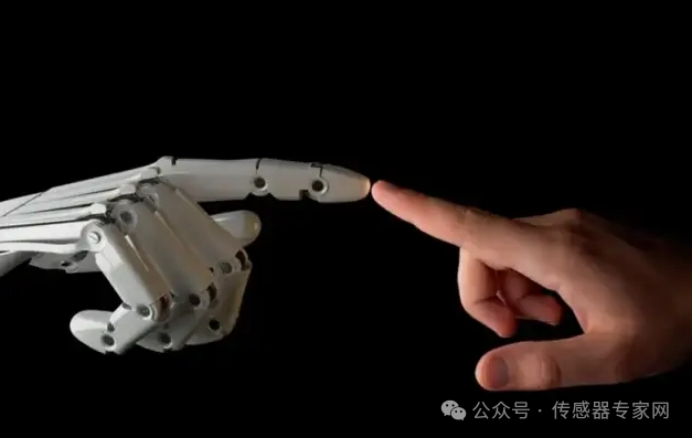In today's rapidly advancing technology, biomimetic tactile sensors are gradually becoming a bridge connecting humans and machines, reality and virtuality. These sensors mimic the tactile perception mechanism of human skin, bringing revolutionary changes to fields such as robotics, wearable devices, and smart healthcare. This article will take you to a deeper understanding of the types, working principles, and applications of biomimetic tactile sensors in real life.

1、 Types of biomimetic tactile sensors
There are many types of biomimetic tactile sensors, which can be mainly divided into the following categories based on their working principles and materials:
Piezoresistive sensor: The working principle of this type of sensor is based on Ohm's law, which states that when the voltage remains constant, the current changes with the resistance. When external stimuli (such as pressure) act on the sensor, the resistance of its internal materials changes, causing a change in current. This change is converted into electrical signals for subsequent data processing and analysis. Piezoresistive sensors have the characteristics of simple process, low cost, and high sensitivity, but are easily affected by environmental factors.
Capacitive sensor: The working principle of capacitive tactile sensors is based on the fact that the storage capacity of capacitors changes in response to external stimuli. A capacitor is a device that can store charges, and changes in its capacitance value can reflect information about external stimuli. This type of sensor has the advantages of short response time and low hysteresis, but has poor load capacity and is susceptible to electromagnetic interference.
Piezoelectric sensor: Piezoelectric sensors utilize the piezoelectric effect, which means that under external force, certain specific materials will generate polarization inside, forming different pole distances and generating charges opposite to the surface of the material. This effect can be used to detect external stimuli such as pressure, vibration, etc. Piezoelectric sensors have the characteristics of high sensitivity, good dynamic characteristics, and wide testing frequency, but they are not suitable for static pressure measurement scenarios.
Frictional electric sensor: Based on the principle of frictional electricity generation, frictional electric sensors can convert friction and pressure in external stimuli into electrical signals. This type of sensor has broad research space in material structure design and sensor performance improvement.
In addition, there are also types of sensors such as flexible sensors (also known as "electronic skin") and MEMS sensors (microelectromechanical system sensors). Flexible sensors have the characteristics of being flexible, lightweight, and highly scalable, and can measure force, temperature, and other features; MEMS sensors, on the other hand, have significant advantages in miniaturization and mass production, and are widely used in fields such as humanoid robots.
2、 The working principle of biomimetic tactile sensors
The working principle of biomimetic tactile sensors is mainly based on the combination of materials science, electronic engineering, and signal processing technology. When external stimuli act on the sensor, its internal materials undergo physical or chemical changes, which are converted into electrical or optical signals. These signals are then sent to a processor for parsing and processing, in order to extract useful information.
For example, in a piezoresistive sensor, external pressure can cause a change in material resistance, which in turn leads to a change in current. After this change is converted into an electrical signal, it can be parsed and processed by a processor to ultimately obtain information about external pressure. Similarly, in capacitive, piezoelectric, and frictional sensors, external stimuli can also trigger corresponding physical or chemical changes and be converted into electrical signals for processing.
3、 Application of biomimetic tactile sensors
The application fields of biomimetic tactile sensors are wide and diverse. In the field of humanoid robots, these sensors can help robots achieve more precise and flexible operations. For example, by integrating tactile sensors on the robot's fingers, the robot can perceive information such as the shape, texture, and stiffness of objects, and adjust its grasping method and force accordingly. In the medical field, electronic skin technology can be used to develop highly sensitive medical gloves, helping doctors identify small abnormalities in early diagnosis; Meanwhile, electronic skin can also be attached to human skin like a band aid, monitoring real-time health data such as blood oxygen and heart rate. In addition, biomimetic tactile sensors also have broad application prospects in fields such as consumer electronics, automobiles, and aerospace.
4、 Future prospects
With the continuous development of artificial intelligence, big data, and the Internet of Things technology, biomimetic tactile sensors will play an important role in more fields. In the future, we can expect these sensors to achieve more extensive applications and breakthroughs in human-computer interaction, intelligent wearables, smart healthcare, and other fields. Meanwhile, with the continuous advancement of materials science and electronic engineering technology, the performance of biomimetic tactile sensors will also be further improved and optimized.
In short, biomimetic tactile sensors, as a bridge connecting humans and machines, reality and virtuality, are gradually becoming an important force in promoting technological progress and innovation. In the future, we have reason to believe that these sensors will shine in more fields and contribute more wisdom and strength to the development of human society.
Source: Sensor Expert Network



